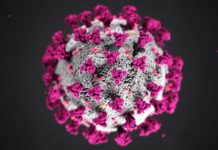Right whales are an endangered species. It is estimated that there are only around 400 to 500 right whales left in the world. They have one calf every 3 to 5 years. From the northern Atlantic, they swim down to the Atlantic coastline to give birth to their babies off the coast of Florida and other warmer Atlantic regions. They’re migrating season starts in mid-November and ends in mid-April.
Federal officials are asking Floridians to stay away from right whales as they do their water activities. They are even putting banners on airplanes that read: “Stay 500 yards away from right whales – it’s the law.” The NOAA (National Oceanic and Atmospheric Administration) has used these banners on airplanes before to reach beach-goers and Floridians in general. This law applies to air and watercraft, including those that don’t have motors. Fines have been enforced toward this law reaching into the thousands of dollars.
Interestingly enough, right whales were given their name because according to hunters they were the “right” whale to hunt. The reason they were “right” is that they swim slowly and close to the water’s surface. They also float after they are killed. They contain tons of oil and baleen, which has an elastic substance that was used in whips and corsets.
As a result of the right whales being endangered, researchers have even had to get permits to tag these whales for further study to save them. This year, the NOAA has joined Alaskan and Floridian researchers in an attempt to find better ways to study the right whales by using new satellite-tracking devices and methods. They are hoping to learn more about the migratory habits of these animals so that steps can be taken to avoid collisions with water and aircraft and to keep people away from the whales. The reason this is so hard to do is because the right whales are very independent animals. It is also hard to tag them because they lack dorsal fins. Part of this project also includes creating tags that can stay long enough on the right whales to get accurate data on them.
Another program called the Marine Resources Council (MRC) has also been involved with helping right whales stay out of danger. The MRC has done this by training volunteers to spot right whales in their natural habitat and report the sightings. Once these sightings are reported, a warning system that has already been developed for this specific purpose warns ships to keep an eye out for right whales that may come into contact with them.
With these and other programs out there and people keeping a look out for right whales, it is hoped that their number can increase and they can eventually come off the endangered species list. We want to keep these beautiful mammals alive for future generations to enjoy.

















